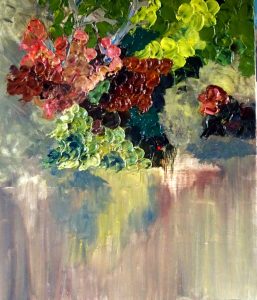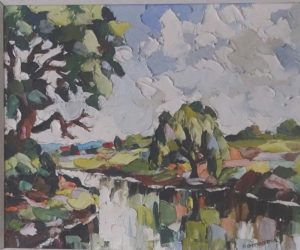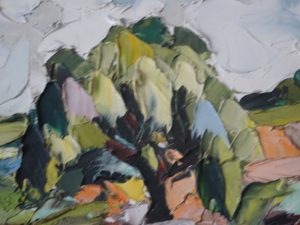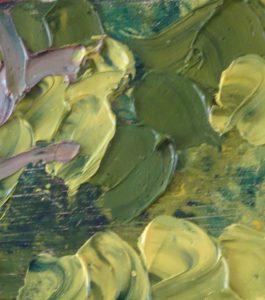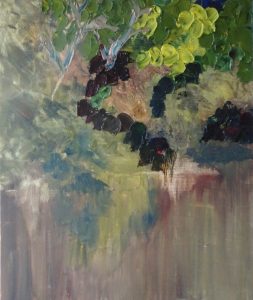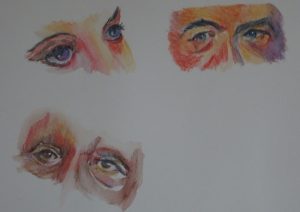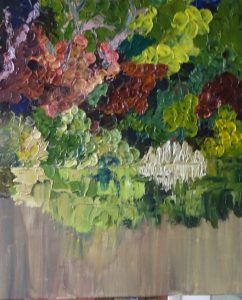 As you can see, I’ve made a start on the water, using modified splodges. One of the more thought provoking aspects of this technique is working out the sequence of the marks. If I want to retain their integrity, they need to be arranged so that I don’t disturb the shape. The shapes in the water themselves are pulled downwards, so the lower edge can be covered with the next stroke. The mental acrobatics required to mirror the trees while also working out the sequence are tiring!
As you can see, I’ve made a start on the water, using modified splodges. One of the more thought provoking aspects of this technique is working out the sequence of the marks. If I want to retain their integrity, they need to be arranged so that I don’t disturb the shape. The shapes in the water themselves are pulled downwards, so the lower edge can be covered with the next stroke. The mental acrobatics required to mirror the trees while also working out the sequence are tiring!
Looking at the photo, I’m quite pleased with the result so far. The water does look to be a different texture to the trees. However, there is a huge reflection of the sky to be painted. Normally, I complete the reflections, leave them to dry, then slash in the light over the top. That will not be possible this time.

